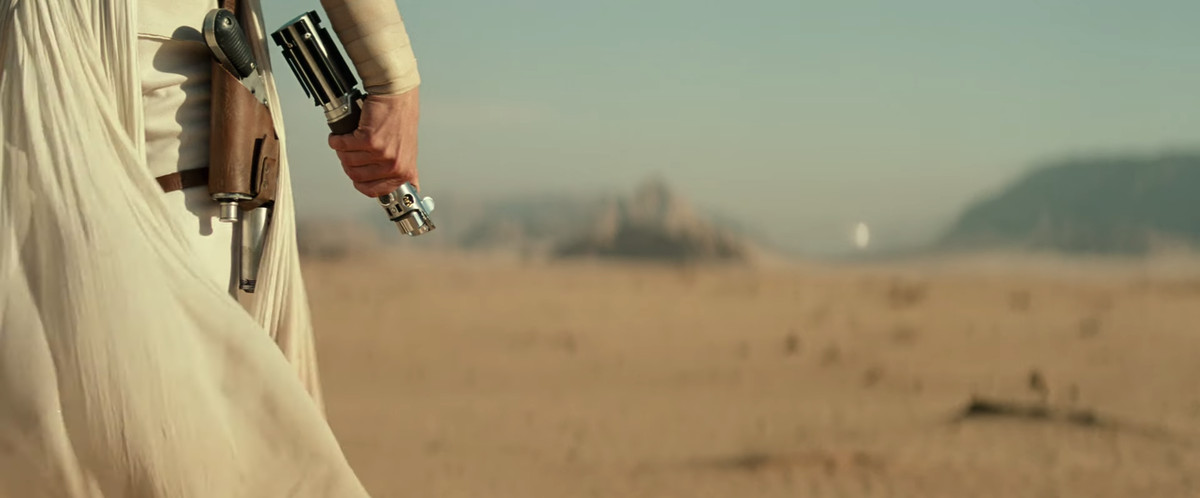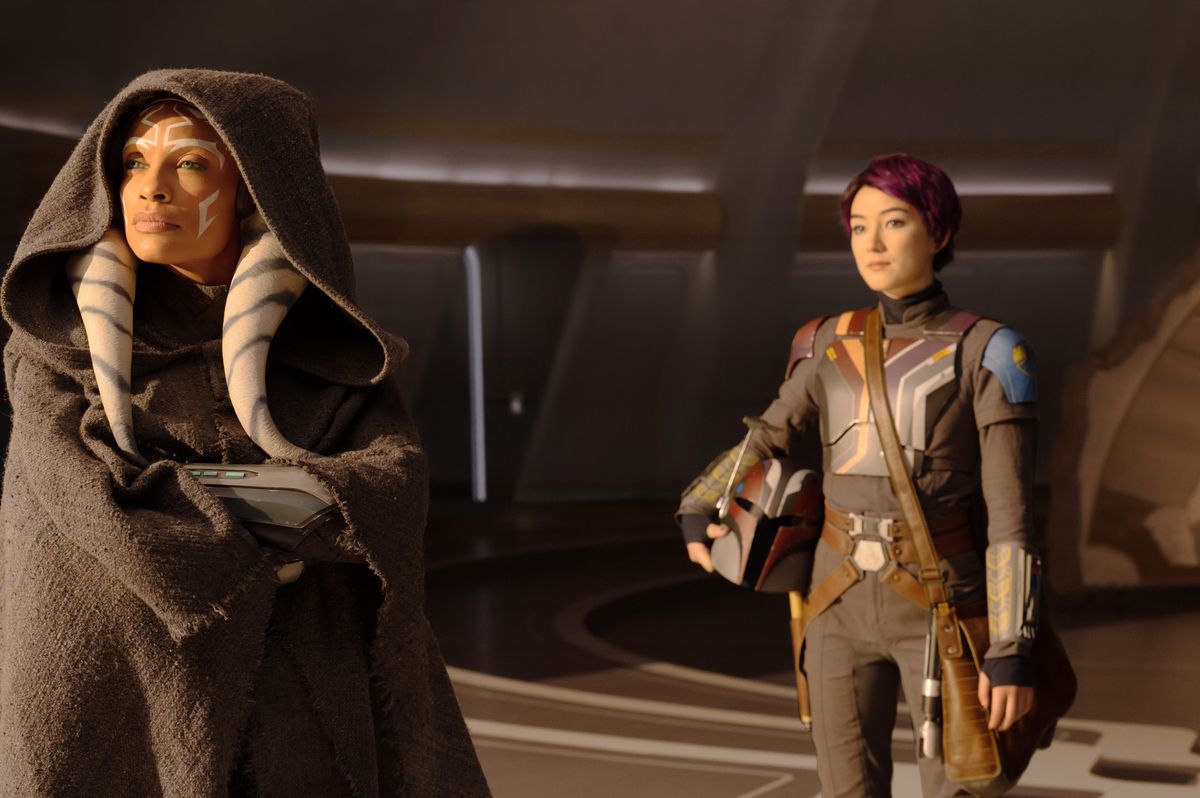Why Lucasfilm decided the High Republic is the future of Star Wars
Star Wars doesn’t really have a future right now. The franchise itself does that – new entries will keep coming forever if Disney has anything to say about it – but the story can’t escape the Skywalkers or imagine a future beyond the franchise’s most prominent family. In fact, most recent TV spinoffs, such as The Mandalorian, Boba Fett’s Book, Obi Wan Kenobi, Andor, And Ahsoka, just filled in the gaps between the main films. But with Disney Plus’ new show The acolyteLucasfilm finally ventures outside the time period of the Skywalker Saga by letting us know that the real future of Star Wars lies in the past: in a time known as the High Republic.
To understand why Lucasfilm is once again taking the franchise backwards, it’s important to understand exactly what the High Republic is and where it started. The High Republic was first introduced into the Star Wars canon as a series of books in 2020. The books are designed to introduce fans to a new era in Star Wars history that had never been explored before, and to open up the franchise to more inventive storytelling in a period that had a bit more canonical freedom. Since then, more than 50 books, comics, and short stories have been written about the High Republic era, all interconnected and telling different sides of one larger story about that period. Despite all that, The acolyte will be the first time the High Republic appears on screen.
Beginning about 1,000 years before the opening moments of the Skywalker Saga, the High Republic is a period in Star Wars history that feels highly calculated by Disney for maximum franchise potential. It’s a setting that provides plenty of distance (over 25,000 years) from the beginning of the Old Republic, Lucasfilm’s attempt to invent a new past for Star Wars after the prequel films were released and before the rights were sold to Disney, while also gave the creators a chance to explore the opulence and technological wonders of the galaxy, long before the lax Jedi Order from the prequel films handed it over to Palpatine’s Empire.
Image: Lucasfilm
All of this makes perfect sense for novels and supplementary material. Delving into the past gives writers a lot of open space to tell stories, create characters, and generally build new lore, without having to be tied back into existing franchise plans or risk clashing. come up with the canon story that the main films contain. and shows progress. But over the past five years, the movies and shows have stopped promoting anything; they are now as connected to the past as anything else.
Lucasfilm’s concern about the future, like so many other Star Wars problems, is tied to the creative finitude of Disney’s sequel trilogy. Rather than taking a major step into the greater future of the Star Wars universe, they were instead closely tied to the legacy of the films that came before them, embedding stalwarts like Luke and Han into the fabric of their story screwed. Lucasfilm used its biggest platform in a decade to build a box around on-screen Star Wars stories that was only as big as the Skywalker family – and its members both real and imagined – by taking a grand story and making it disappointingly small.

Image: Lucasfilm
Furthermore, while financially successful, so is the cultural memory and fondness for those films spotty at best (And at worst downright disastrous). The questionable reception of these films made continuing the story after the trilogy feel like a creative risk not worth taking. The series therefore had to turn inward and explore the small parts of the Skywalker Saga that the nine-film saga could not reach during its running time. This creative effort was largely led by Dave Filoni, who rose to fame through his work on Star Wars Clone Wars animated series. Although Filoni is fiercely loyal to the original works of George Lucas, Clone Wars was a show designed entirely around this gap-filling style of storytelling, and it’s a mentality he’s also carried over into his work on the Disney Plus live-action series. All this gives the impression of a universe that somehow becomes smaller with each successive entry. Instead of expanding the galaxy, it just becomes more microscopic and interconnected with each episode.

Photo: Suzanne Tenner/Lucasfilm
It’s easy to see why this kind of creative conservatism particularly appeals to Disney at this point in Star Wars history. The franchise is one of the company’s greatest creative properties, and almost every major change or risky move it has attempted so far has been either divisive, like the sequel trilogy, or an outright disaster, like the Star Wars Hotel. So instead of putting the franchise in jeopardy, Disney has chosen to put the franchise in creative stasis in recent years. Only green projects on screen that fit neatly into the universe, show fans more of the characters they already care about, and change very little – with the exception of the proposed Rey movie in the far future.
In this way, The acolyte, and the future of Star Wars in the High Republic in general, is extremely exciting. It’s necessarily a breath of fresh air for the series, a step away from the recent crop of series whose plots can be succinctly organized into a list of famous character cameos. It’s also hopefully a sign that Star Wars will soon escape Skywalker’s legacy and the gravitational pull of Filoni’s method of digging deeper into the universe rather than expanding it.
And so far, the High Republic has been pretty exciting as a space for unique Star Wars stories. The entire era started with a story about the galactic response to a hyperspace disaster, and now includes various sects of Force believers and even an anti-Force conspiracy that’s more interesting and generally clandestine than what Star Wars has gotten to in recent times. has been able to. past. The acolyteAlso, based on the trailers, it appears to be delving into a very unique kind of Jedi story, a murder mystery with shades of both martial arts films and serial killer thrillers. But it’s hard not to also view this trial balloon for the future of Star Wars with a little disappointment. Just because the time period is different doesn’t mean it’s riskier or more daring.
No matter how big the High Republic framework becomes, or how many films and shows we spend there, it can never truly be a step forward for the franchise until Star Wars actually moves forward in time. Jumping 1,000 years into the future instead of the past is a creative risk, of course, but one that would at least feel alive and exciting. For all its promises, the High Republic is still, like the rest of Star Wars in recent years, aiming for a future we already know by heart. But if Star Wars has to be stuck in the past, at least the High Republic goes back far enough to give us some original stories and new dynamics for the Force. And if The acolyte is good, maybe we’ll get enough series and movies for that era to reveal a few new surprises and wrinkles in the Star Wars universe. Either way, we can at least watch an eight-episode series knowing there won’t be a single Skywalker in sight.
